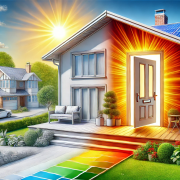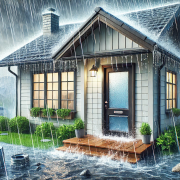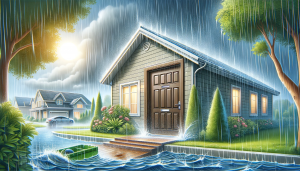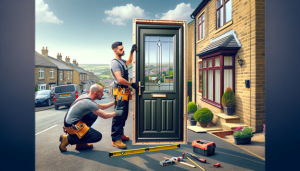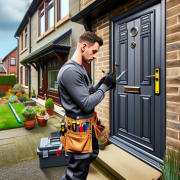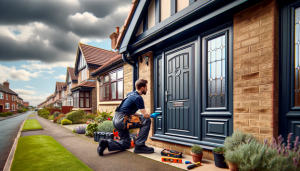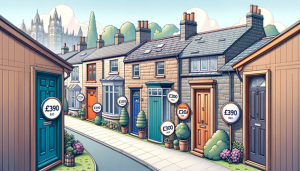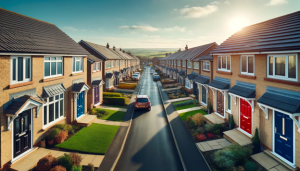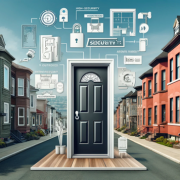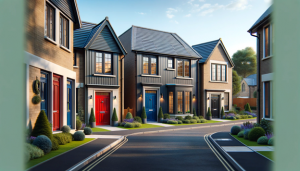What is the Lifespan of a Composite Door?
Composite doors have become increasingly popular due to their durability, aesthetic appeal, and low maintenance requirements. As homeowners invest in these doors, understanding their lifespan is crucial for long-term planning and maintenance. In this article, we will explore the factors that influence the longevity of composite doors and provide insights for homeowners considering this option.

Factors Affecting the Lifespan of Composite Doors
Quality of Materials
The lifespan of a composite door largely depends on the quality of the materials used in its construction. High-quality composite doors are made from a combination of materials such as uPVC, wood, insulating foam, and reinforced plastic. These materials are engineered to provide superior strength and durability. Conversely, doors made from lower-quality materials may not withstand environmental stressors as effectively, leading to a shorter lifespan.
Installation Practices
Proper installation is essential for maximising the lifespan of a composite door. Professional installation ensures that the door is correctly aligned, sealed, and secured, preventing issues such as drafts, leaks, and misalignment. Poor installation can lead to premature wear and tear, reducing the door’s effective lifespan. Homeowners should seek experienced and certified installers to ensure their composite door is fitted correctly and performs optimally over time.
Maintenance and Care
While composite doors are known for their low maintenance, regular care can significantly extend their lifespan. Routine cleaning of the door’s surface with mild detergent and water helps maintain its appearance and prevents the buildup of dirt and grime. Lubricating the hinges and locks ensures smooth operation and prevents mechanical wear.
Environmental Influences
Weather Conditions
The environmental conditions to which a composite door is exposed can significantly impact its lifespan. In regions with extreme weather conditions, such as heavy rainfall, intense heat, or severe cold, composite doors may experience accelerated wear. For instance, excessive moisture can lead to swelling or warping, while extreme heat can cause the materials to expand and contract. In milder climates, composite doors generally last longer due to less environmental stress.
Exposure to UV Radiation
UV radiation is another environmental factor that affects the lifespan of composite doors. Prolonged exposure to sunlight can cause the door’s surface to fade and degrade over time. However, many high-quality composite doors come with UV-resistant coatings that protect against the harmful effects of the sun. These coatings help maintain the door’s colour and structural integrity, even in sunny climates. Opting for composite doors with UV protection is a wise choice for enhancing durability and appearance.
Comparative Lifespan with Other Door Materials
Composite vs. Wooden Doors
When comparing the lifespan of composite doors to wooden doors, several factors come into play. Wooden doors, while offering a classic and natural aesthetic, require substantial maintenance to prevent issues such as rot, warping, and insect damage. Even with regular upkeep, wooden doors typically have a shorter lifespan compared to composite doors. In contrast, composite doors are more resistant to environmental damage and require less maintenance, resulting in a longer effective lifespan.
Composite vs. uPVC Doors
Composite doors also compare favourably to uPVC doors in terms of longevity. While uPVC doors are known for their durability and low maintenance, they may not offer the same level of strength and insulation as composite doors. Composite doors, with their multi-material construction, provide superior thermal and acoustic insulation, contributing to a longer lifespan. Additionally, composite doors offer greater design flexibility and can better withstand impacts and environmental stressors.
Signs That Your Composite Door Needs Replacement
Common Indicators
Over time, composite doors may exhibit signs of wear and tear that signal the need for replacement. Common indicators include visible cracks, warping, and fading of the door’s surface. Functional issues such as difficulty in opening or closing the door, drafts, and decreased insulation efficiency are also red flags. If the door starts to swell or stick, it may indicate internal damage that compromises its structural integrity.
Professional Assessments
In addition to self-assessment, it’s beneficial to seek professional evaluations to accurately determine the condition of your composite door. Professionals can identify underlying issues that may not be immediately apparent, such as compromised seals or structural weaknesses. A thorough inspection typically includes checking the door’s alignment, seals, and overall performance.
Enhancing the Longevity of Composite Doors
Upgrades and Improvements
There are several upgrades and improvements that can extend the lifespan of existing composite doors. Adding or replacing weatherstripping can improve insulation and prevent drafts. Installing high-quality seals around the door frame enhances protection against moisture and air infiltration. Additionally, applying a fresh coat of paint or varnish can protect the door from UV damage and environmental wear, preserving its appearance and functionality.
Best Practices for Homeowners
Homeowners can adopt several best practices to maintain their composite doors and ensure their longevity. Regular cleaning of the door’s surface with mild detergent and water prevents the buildup of dirt and grime. Lubricating the hinges, locks, and other moving parts ensures smooth operation and prevents mechanical wear. Performing seasonal checks, especially before and after extreme weather conditions, can help identify and address potential issues early.
Additional Benefits and Considerations
Other Safety Features of Composite Doors
In addition to their enhanced durability, composite doors offer several safety features that make them an excellent choice for homeowners. Composite doors are designed to be highly secure, with reinforced frames and multi-point locking systems that provide robust protection against break-ins. The materials used in composite doors are also resistant to warping and swelling, ensuring that the door fits securely in its frame and maintains its security features over time.
Environmental and Economic Factors
The environmental and economic benefits of composite doors further contribute to their appeal. Composite doors are often made from recycled materials, making them an environmentally friendly option. The production process for composite doors also consumes less energy and generates fewer emissions compared to traditional wooden doors. Economically, composite doors are cost-effective due to their long lifespan and low maintenance requirements.
In conclusion, composite doors offer an impressive lifespan due to their high-quality materials, professional installation, and low maintenance requirements. They withstand various environmental conditions, provide superior security features, and are economically and environmentally advantageous. By recognising the signs of wear, seeking professional assessments, and implementing best maintenance practices, homeowners can maximise the longevity of their composite doors. For those looking for durable, secure, and sustainable entryways, composite doors remain a top choice.


